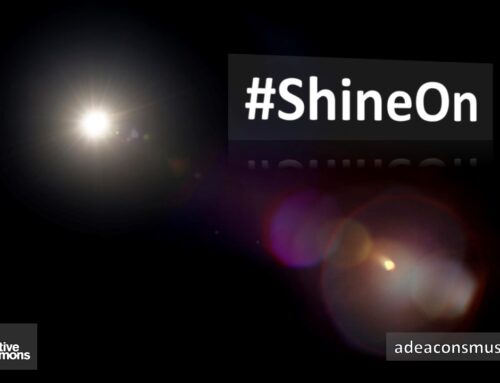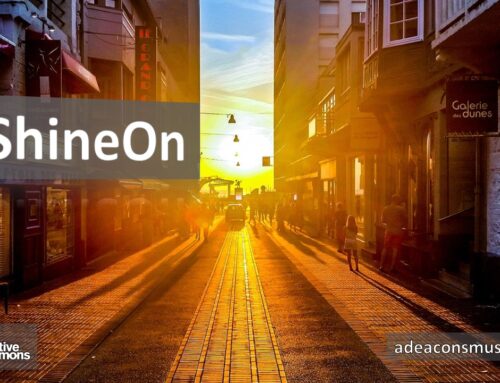Art dances
through halls & walls
Creativity inspires
the server
& served
How does
the Muse
touch you?
What creation
are you becoming?
(A Pres-bit|@wpgpres)
This last week, Winnipeg Presbytery, members of The Conference of Manitoba & Northwestern Ontario as well as many friends and supporters gathered to celebrate a recent publication of one of our own: barb janes’, Inviting Wonder. Her main idea connects with the relationship between the church and the arts. She asks many helpful questions, particularly around our buildings. She discussed the use of our building rich context as a form of hospitality. Specifically, how might we share space with those who create art? For me, to paraphrase, how might the gift of our space be used to develop reciprocal relationships with the secular?
During barb’s reflecting and sharing at the book launch, she clearly challenged us that this work of hers – something she calls piazza theology – is not a way to fill the pews or to address decline, but to embrace a hospitality that makes space for the public and faith communities, seekers and creators, so as to build relationships in safe space. What struck me most – during this time – is how she linked this with the social good.
For many of us United Church of Canada folk, the social good – the social gospel – is central to our sense of identity. This is not new, but barb’s reframing has led me to reflect that that our physical space is more than just about our worship. It provides more than just a place to do our administrative and governance work. For if this is all we do – as inward looking practices of faith – we may have to face our own idolatry.
It does not come as a surprise for many who walk within our denominational context that we are experiencing shifts and transformation. We are navigating new waters and sometimes we get stuck in the despondent, as opposed to moving through lament to innovation and embracing the emergent potential before us. So – as barb continued to share this rich work – I realised that this is another piece in this paradox of many answers, as opposed to a quick fix or one grand programme of the ‘right answer.’ These pieces are like the broken fragments she talks about: shards that when put together in news ways creates the unexpected and – I suspect – the surprising.
The challenge (for us) as people like barb share their voice, is whether or not we are able – even willing – to not only face such questions, but to take action? Apathy and inertia are certainly present – and though there is much that is understandable – I wonder about how much longer we have before the potential outlined in this one example might be lost?
Many people with whom I have the honour to walk, talk about this time we found ourselves in such ways as: something is about to happen; it feels like change is right around the corner; fear about feeling unmoored from ‘normal;’ and, an embracing of the fear and want the new to happen now! And, as I continue to reflect since the book launch, I cannot help but coming back to this: the change we want is in our power to bring about: Do we believe that?
This shift of context, demographic, and denominational identity is happening right now and whatever happens next will not be because of some foundational blueprint – though such a tool might be a great resource. I truly believe that we are the actors who must realise we are actually the directors. We are the carpenters, who must awaken to the fact we are the sculptors. We are those anonymous people who fix and tune instruments, who are actually the musicians. The agency lies in us to vibrantly and passionately live into this ongoing journey of discipleship: the questions isn’t – for me – whether this is true – it’s whether or not we are willing to act …








Thanks for sharing this Richard. Good stuff! We do have the gift of space – now what will we do with it? I was with two congregations this weekend that grappled with this very question and very easily decided to transform their space so it would be more flexible and usable for them and their communities. Maybe not the art community but what is around them. I love the concept of piazza theology!
Thanks for sharing this experience Gay! I think that barb’s challenge – as one of many – highlights the question as to what is the purpose of our space? How might me we use it as a form of hospitality within our context. The impetus – obviously for barb – is art, but I think your experience extends that piazza theology in rich ways that I think honours the lens introduced in her work. Thanks so much for sharing this experience!
I am involved with 2 congregations part time. Both are discussing space and church needs. The city one sees a need to maintain and improve the current structure to be more open and flexible both for themselves and the community partners it already has using the meeting. Yet the sanctuary remains only useable on Sundays for services for themselves and a church they rent space to. They are discussing making the sanctuary over so it can used on weekdays and evenings.
The other church is a First Nation church and they (not the national UC) own the building. They are proud of that fact and yet find it hard to maintain. They are in a community with little access to its church and so harder to attract folks. I find both discussions faith filled. We are here to do what for whom and what do we need to do that?
Hi Ken,
Thanks for taking the time to share these experiences! It sounds like one of the pieces that needs to be held up – from your sharing – is the consultative aspect of church spaces when considering how they might be used for the common good. Would that be a fair observation?